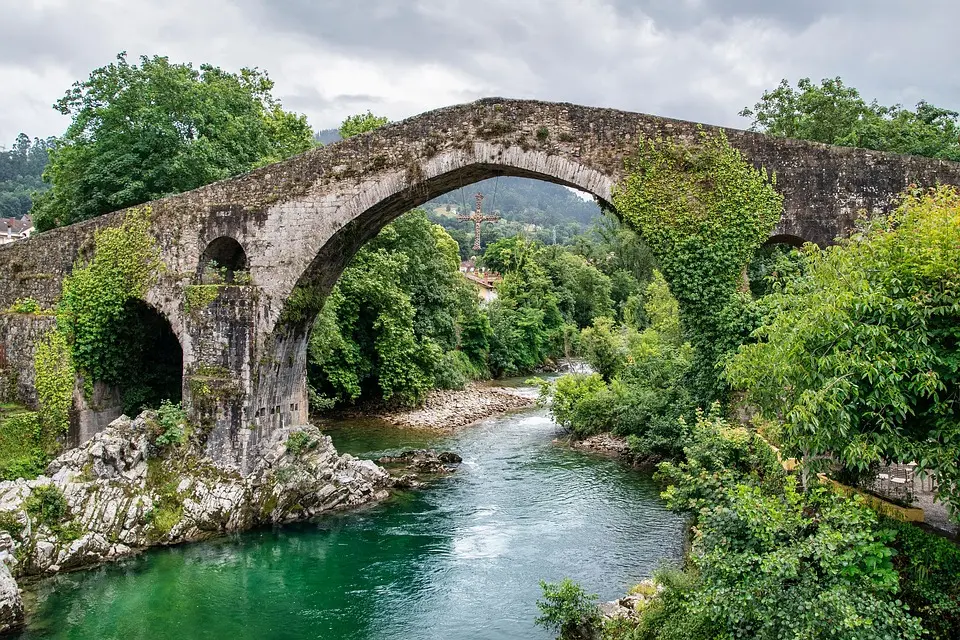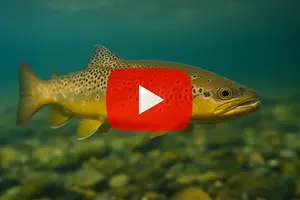Brown Trout: Habitats - Deep Pools
Table of Contents
- Fishing Deep Pools for Brown Trout
- Overview
- Understanding Deep Pool Features
- Anatomy of a Deep Pool
- Why Brown Trout Hold in Deep Pools
- Seasonal and Environmental Factors
- Time of Year
- Water Temperature & Clarity
- Current, Weather & Time of Day
- Fly Fishing Tactics for Deep Pools
- Gear & Rigging
- Presentation Techniques
- Spinning Gear Tactics
- Lure Selection
- Retrieve Strategies
- Bait Fishing
- Case Studies
- 1. Madison River (Spring)
- Seasonal Conditions
- Gear Adaptations
- Presentation Strategies
- 2. Henry’s Fork (Summer)
- Seasonal Conditions
- Gear Adaptations
- Presentation Strategies
- 3. White River (Fall/Winter)
- Seasonal Conditions
- Gear Adaptations
- Presentation Strategies
- Community & Expert Tips
- Popular Related Search Terms
Fishing Deep Pools for Brown Trout

Image credit: elg21 on Pixabay
Overview
Fishing deep pools can be one of the most productive strategies for targeting Brown Trout, as these fish often use deep, slow-moving water to lie in ambush, conserve energy, and access stable thermal refuges during varying seasonal and weather conditions. Deep pools provide oxygen-rich, food-laden environments—collecting drifting insects, nymphs, and small baitfish—that appeal to trout year-round. Effectively unlocking these holding areas requires understanding pool structure, environmental variables, and selecting the right gear and presentation for both fly and spinning setups. This guide dives into pool anatomy, seasonal and daily fluctuations, gear selection, tactics, and community-sourced tips to give you an exhaustive playbook for success.
Understanding Deep Pool Features
Anatomy of a Deep Pool
- Head (Inflow Zone): Where currents deposit drifting food; prime feeding lanes.
- Tail (Outflow Zone): Current seams concentrate food; excellent transition area between deep rest and feeding pockets.
- Middle Basin: Deepest section, typically >5 ft; serves as refuge during high temperature or low oxygen spells.
Why Brown Trout Hold in Deep Pools
- Thermal Refuge: Cooler, more stable temperatures in summer or low-light periods.
- Oxygen Concentration: Pools often replenish oxygen from upwelling currents or riffles.
- Energy Conservation: Reduced current allows trout to rest and ambush drifted prey with minimal effort.
- Cover & Ambush Points: Rocks, logs, and drop-offs provide concealment and strike lanes.
Seasonal and Environmental Factors
Time of Year
- Spring: Pools often clear post-runoff; trout begin moving into deeper water as riffles warm.
- Summer: Peak temperature, trout retreat deep, hunting in shaded banks or under cutbanks.
- Fall: Increasing current draws trout to tail-outs; deep pools serve as staging areas before spawning migrations.
- Winter: Trout hold deep but may move up at midday when light warms surface layers slightly.
Water Temperature & Clarity
- Clear, Cold Water (< 55 °F): Trout will sit mid-pool or near the head under sunlit riffles.
- Warm, Turbid Water (> 60 °F): Seek deep, shaded pockets or adjacent off-current eddies to avoid temperature stress.
Current, Weather & Time of Day
- High Water: Pools deepen; edge seams and submerged structure become key holding spots.
- Low Water: Trout concentrate in the deepest basins and below submerged structure seams.
- Sunny Midday: Fish deep pools with nymph rigs or slow retrieves under shaded banks.
- Dawn & Dusk: Trout may cruise shallows; target tail-outs and shallow heads with streamers or dries.
Fly Fishing Tactics for Deep Pools
Gear & Rigging
- Rod: 5–6 wt for nymphing; 7–8 wt for heavy streamers or rodent patterns at night.
- Leader & Tippet: Longer leaders (9–12 ft) with a stronger butt-section to turn over heavy flies; 4X–6X tippet for nymphs.
- Flies:
- Nymphs: Tungsten beadhead patterns (Pheasant Tail, Hare’s Ear) to reach depth quickly.
- Streamers: Weighted Zonker, Woolly Bugger, or sculpin imitations fished slowly across pool basins.
- Dries: For low-light or night, large terrestrials (mouse, foam beetles) skated on the surface.
Presentation Techniques
- Dead Drift Nymphing: Cast upstream, mend to counteract drag, allow nymph to hug bottom.
- Indicator Fishing: Useful in deep water; adjust depth by measuring pool depth and tying indicator 2 ft above nymph.
- Swinging Streamers: Swing upstream and across current seams; pause in the strike zone before recasting.
- Skating Terrestrials: Skated slowly along the surface edge seam where trout ambush on the bank break.
Spinning Gear Tactics
Lure Selection
- Crankbaits & Crank Spoons: Little Cleo spoon, small Rapala jointed minnows to probe multiple depths.
- Inline Spinners: Panther Martin or Rooster Tail slowed near bottom for trout in mid-depth seams.
- Soft Plastics: 2–3 in worm or grub on a jighead bounced along the pool floor.
Retrieve Strategies
- Slow Roll: Keep lure in strike zone; twitch rod tip to impart subtle action.
- Stop-Go: Burn retrieve then pause to trigger reaction strikes from ambush trout.
- Pulse Retrieve: Short, sharp pulls to mimic injured baitfish in currents.
Bait Fishing
- Live Bait: Waxworms or nightcrawlers under a small float, fished 1–2 ft off bottom.
- PowerBait Dough: Molded around light hooks; present near structure seams with minimal weight.
Case Studies
1. Madison River (Spring)
Seasonal Conditions
Spring on the Madison River (April–May) brings rising flows from snowmelt and prolific blue-winged olive and midge hatches that concentrate brown trout in deep pools and tailouts.
Gear Adaptations
Anglers break out a 9 ft, 5 wt rod spooled with a floating line and extend to 12–15 ft fluorocarbon leaders (5X–6X) to present small nymphs gently in clear water.
Weighted tungsten-bead nymphs (Prince, Pheasant Tail sizes 14–18) are tied in a two-fly dropper rig to get flies quickly into the 6–8 ft depth seams where spring browns hold.
Presentation Strategies
Cast upstream of undercut banks and mend early to achieve a drag-free dead-drift swing through pool tails, triggering aggressive takes as fish key on emerging insects.
Strike indicators set 2–3 ft above the point fly help detect subtle takes from trout hugging deep-water seams.
2. Henry’s Fork (Summer)
Seasonal Conditions
Summer (June–August) on the Henry’s Fork is defined by Salmonfly (late May–early June), caddis, and mayfly hatches that push trout into shallow riffles, pocket water, and pool edges.
Gear Adaptations
A 5 wt or 6 wt rod with floating line, a 10–12 ft leader, and light tippet (6X–7X) is standard to match delicate dry-fly and emerger patterns.
Key fly patterns include Salmonfly nymphs (size 6–8), Pale Morning Duns, Green Drakes, and terrestrials (hoppers, foam beetles) for mid-summer surface action.
Presentation Strategies
Execute long, drag-free drifts across seams and riffles, mending to keep dries in the film and imitating natural insect drift.
When dries fail in midday, switch to emerger skater rigs or tight-line nymphing with small midge or mayfly nymphs to target selectively feeding trout.
3. White River (Fall/Winter)
Seasonal Conditions
Fall (October–November) sees pre-spawn browns become aggressive in deep runs, while winter’s cold drives trout into deep, lethargic pools for refuge.
Gear Adaptations
In fall, anglers pull out stout 8 wt (or heavy 6 wt) rods with intermediate or sinking-tip lines to swing large streamers (Zonker, Woolly Bugger sizes 2–6) into deep mid-channel lies.
During winter, switch to a 4 wt or 5 wt rod, floating line, and a simple indicator rig with small nymphs or midges (sizes 16–20), allowing flies to drift slowly along the bottom.
Presentation Strategies
For fall streamers, cast across pool seams and use a slow, steady retrieve (with occasional figure-8s) to provoke pre-spawn strikes.
In winter, focus on precision casts to pool heads, dead-drifting small midges or midge pupa under an indicator, holding flies in the strike zone for extended drifts}.
Community & Expert Tips
- Forum Wisdom: Target the head and tail seams first, then work the basin systematically; trout rarely feed mid-pool unless spooked by angler pressure.
- Local Guides: Use polarized sunglasses to spot subtle rises or fin flicks indicating trout sitting in drop-offs.
- Night Tactics: Brown trout feed more aggressively; use weighted streamers on 6–8 wt rods for deep-water swings.
- Weather Windows: After rain clears and water drops slightly, deep pools become prime ambush sites as trout feed heavily on flushed insects.
- Sneak & Stalk: Approach pools low and slow, keeping silhouettes off the water to avoid spooking trout in clear basins.
Featured Video:

Thumbnail credit: Video by “Fishing For MONSTER Brown Trout on Lake Michigan!”
Popular Related Search Terms
| Search Term | YouTube Link |
|---|---|
| Deep Pools Brown Trout Fly Fishing |  |
| Deep River Pools Trout Spinning Lures |  |
| Nymphing Deep Pools Brown Trout |  |
| Deep Pool Streamer Techniques |  |
| Bait Fishing in Deep Pools for Trout |  |
Ask AI for More Info
Try our AI assistant for free—sign up to access this powerful feature.
👉 Sign Up to Ask AI